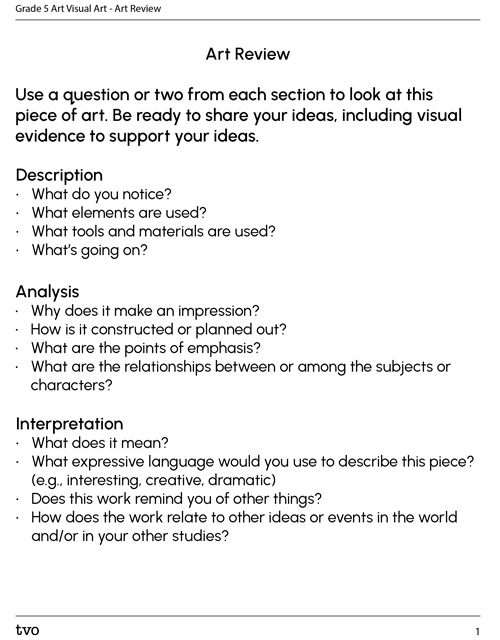Minds On
Let's get started!
Ted Harrison
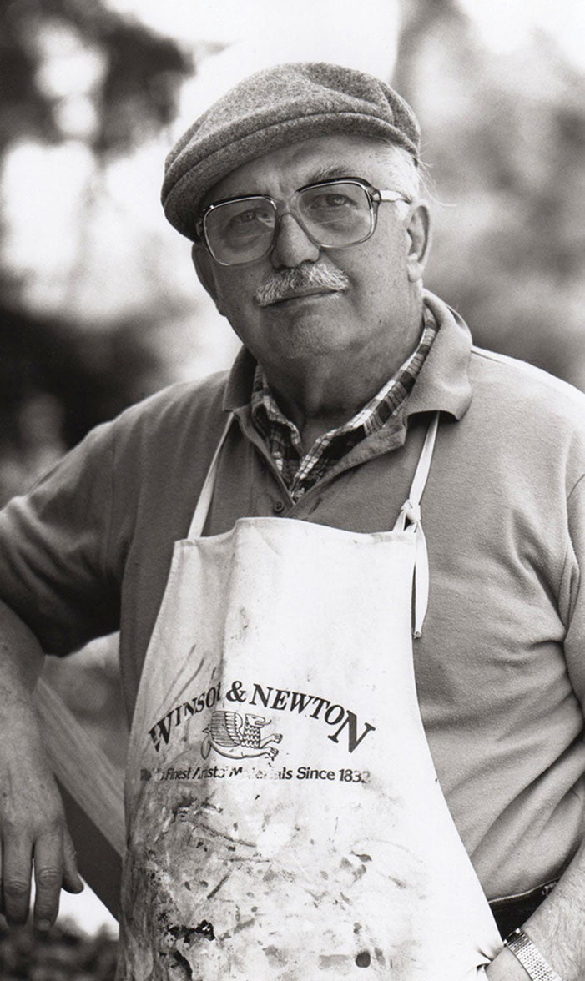
Ted Harrison was a Canadian painter who created colourful landscape paintings of the Yukon. After arriving in Canada, from England in 1967, he was inspired by the rustic landscapes of his surroundings. He uses bright bold colours to show the beauty of nature.
Press ‘Definition’ to access the definition of the word landscape.
A landscape painting or drawing is an artwork where the primary focus is on natural scenery such as trees, rivers, mountains, etc.
“Life is a rainbow road, multicoloured with the most brilliant hues and contrasting with the darkest tones”-Ted Harrison
Source: https://tedharrison.ca/pages/about
Let’s explore a painting by Ted Harrison.
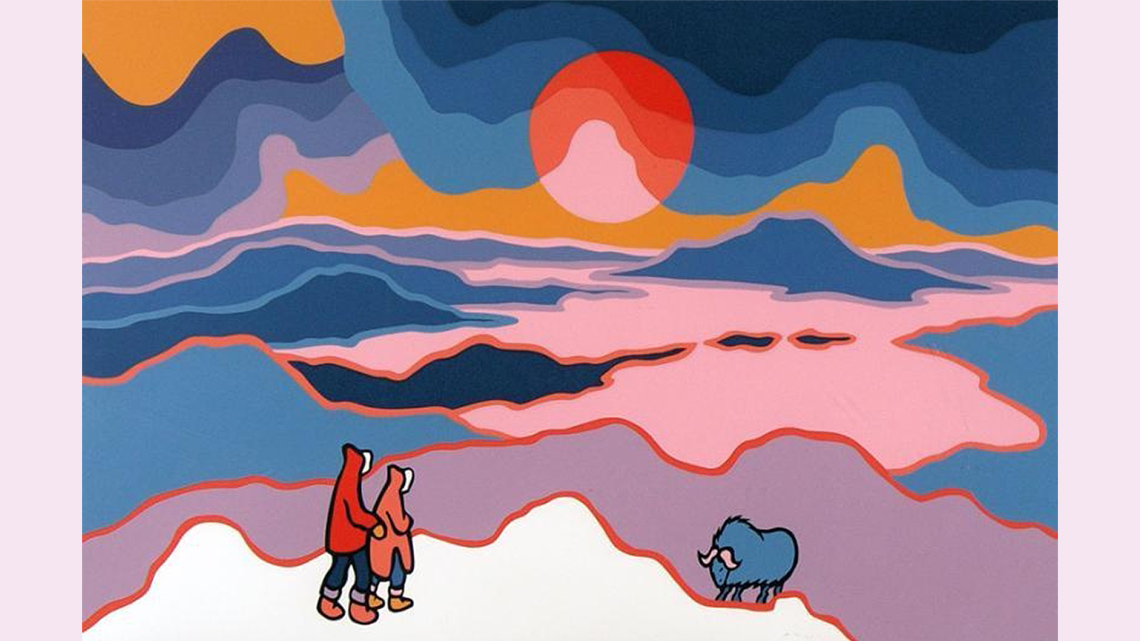
Bathurst Inlet by Ted Harrison, 1987
This image is of 2 people standing on the snowy shore of water with an artic animal in front of them. At the bottom centre there is a jagged edged section of white that represents snow. Two people are standing on the snow looking toward the sun that is a variety of shades of orange. The bright colours that include pinks, different shades of blues, purples and bright orange colours in the sky show the landscape that surrounds the people. The sky is created using layers of lines with each layer being a different shade.
How did Ted Harrison use different elements of design in his work?
Hint
Consider the subject matter, colour choices, and use of lines.
Share your thoughts with a partner, if possible.
Press the following tabs to access the definitions of design and proportion.
Elements of design: colour, form, line, shape, space, texture, and value.
A principle of design. The relationship between objects with respect to size, number, and so on, including the relation between parts of a whole.
Action
Get ready, get set…
Warm and cool colours

When exploring Harrison’s works, did you notice that he uses warm colours in one half of his paintings and cool in the other?
What are warm and cool colours?
Press ‘Definition’ to access a definition of warm and cool colours.
Warm colours: Colours that suggest warmth (e.g., red, yellow, orange). Warm colours usually appear to advance into the foreground.
Cool colours: Colours that suggest coolness (e.g., blue, green, purple). Cool colours often appear to recede into the background or distance.
Examine the following painting and consider the following questions.
- Where do you think this landscape is located?
- What types of colours does the artist use?
- What do you notice about the use of line in this painting?
- What do his paintings remind you of?
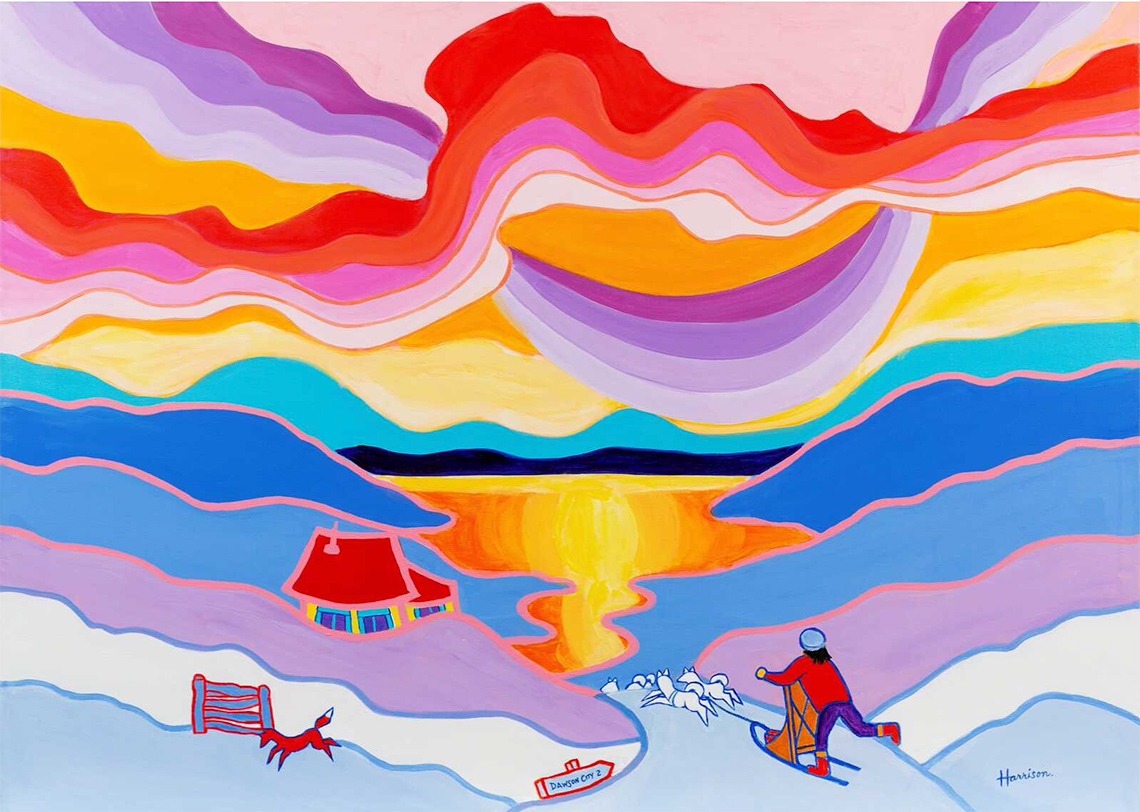
Dawson City Ted Harrison, 1989
This image shows a person on a dog sled heading over the snow towards what appears to be a home. There is a fox in the painting running over the snow. The landscape is created as layers of hills with each layer coloured a different colour such as a light shade of blue, white, purple and two other shades of blue. The sky is also created in layers using lines of different shades of warm colours of reds, oranges, pinks, purples, and yellows. The water reflects the colours used in the sky, most clearly yellows and oranges.
Complete the Art Analysis Chart in your notebook or using the following fillable and printable document. If you would like, you can use speech-to-text or audio recording tools to record your thoughts.
|
Where do you think this landscape is located? |
|
|
What types of colours does the artist use? |
|
|
What do you notice about the use of line in this painting? |
|
|
What do his paintings remind you of? |
|
Press the ‘Activity’ button to access the Art Analysis Chart.
Let’s find out more about Ted Harrison landscapes from the art museum educator at the Museum of Children’s Art in Oakland.
Access the following video entitled "Ted Harrison Landscapes" to learn more about Ted Harrison.
What do you think? Do you agree with their interpretation of Harrison’s art style?
Painting analysis
Examine the following painting. Consider the following questions.
- What is the painting about?
- Where might the scene in the painting be located?
- Why do you think Ted Harrison chose to create this painting?
- What title would you give it? Why?
- What title would you give it? Why?
Record your responses using a method of your choice.
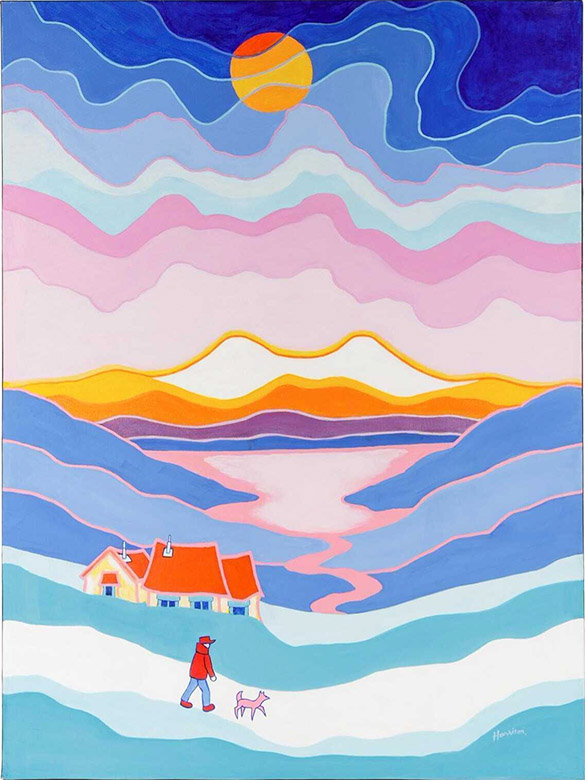
Ted Harrison, 1982
This image shows a person and their dog walking in front of what appears to be a home. The landscape is snowy and hilly. Each section is created using layers with each layer being a different colour. The layers at the bottom of the painting where the person is walking alternate between green and white. As the layers continue towards the background, the colours begin to change to different shades of blue with what appears to be a pink path running through the centre of the landscape which could be water. In the background, the colours change with each layer again to oranges, purples, pinks and yellows. As the layers rise to the top of the painting, they use pinks, then whites, then shades of blue that get darker as they get higher.
Press ‘Answer’ to access the name of the painting.
This painting is called “Going Home.” How does that compare to what you named it?
Consolidation
Art review

After learning about Ted Harrison and discovering all his amazing paintings, it’s time to do some more formal “exploring”. This is a called an art review. Use your own ideas and art vocabulary like the elements of design to describe the following piece of art. Pick one or two questions from each section of the following art review outline to explain what you think about this piece. Record your ideas using any method of your choice.
Press the following tabs to access definitions of art review and elements of design.
A detailed analysis and evaluation of a work of art.
Colour, form, line, shape, space, texture, and value.
Complete your Art Review in your notebook. Use the following printable document as a guide. If you would like, you can use speech-to-text or audio recording tools to record your thoughts.
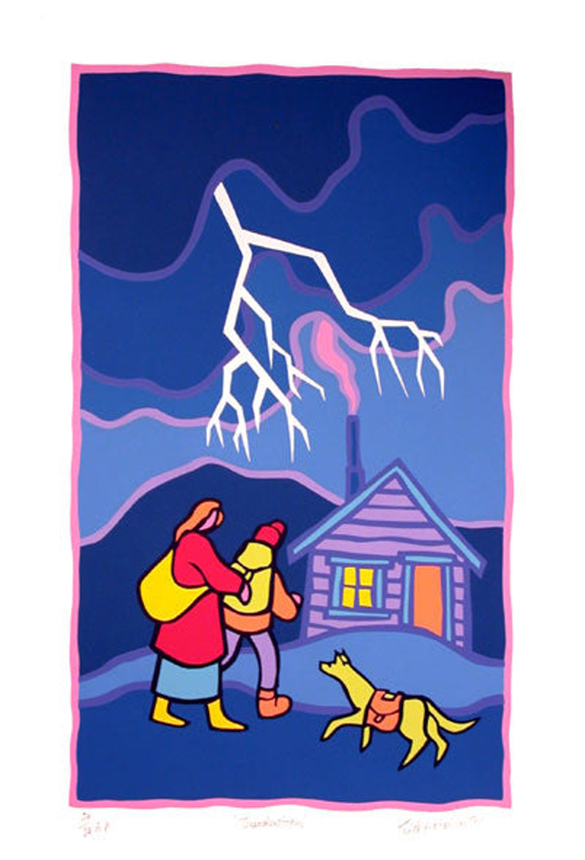
Thunderstorm by Ted Harrison, 1986
This image is of two people and their dog heading into a log home during a storm. The background is created using layers using dark shades of blues with each layer. A jagged, white lightning bolt comes through the cloud, over the home. The log cabin has a pink, smoke-filled chimney on the left of the rooftop. The door is a soft orange colour and a warm yellow light radiates from the only window. The two people are approaching the front of the cabin with a yellow dog. The one person is wearing a long red coat, blue skirt, and yellow boots, and is carrying a yellow bag draped over their shoulder. The other is wearing lavender pants, an orange coat, orange boots, a red hat, and has a yellow backpack. The entire image is bordered by a wavy, lavender brush stroke.
Portfolio
Track your progress
Reflect on your learning in this activity. Reflect on the process of reviewing art. How important do you think it is to understand the elements of art? What do you think is the best part of Ted Harrison’s work? Is there something you would do differently if you try an art critique again?
If possible, share your art critique with a peer. If you have a portfolio, you can put your paragraph there to track your progress over time.
Reflection
As you read through these descriptions, which sentence best describes how you are feeling about your understanding of this learning activity? Press the button that is beside this sentence.
I feel…
Now, record your ideas using a voice recorder, speech-to-text, or writing tool.
